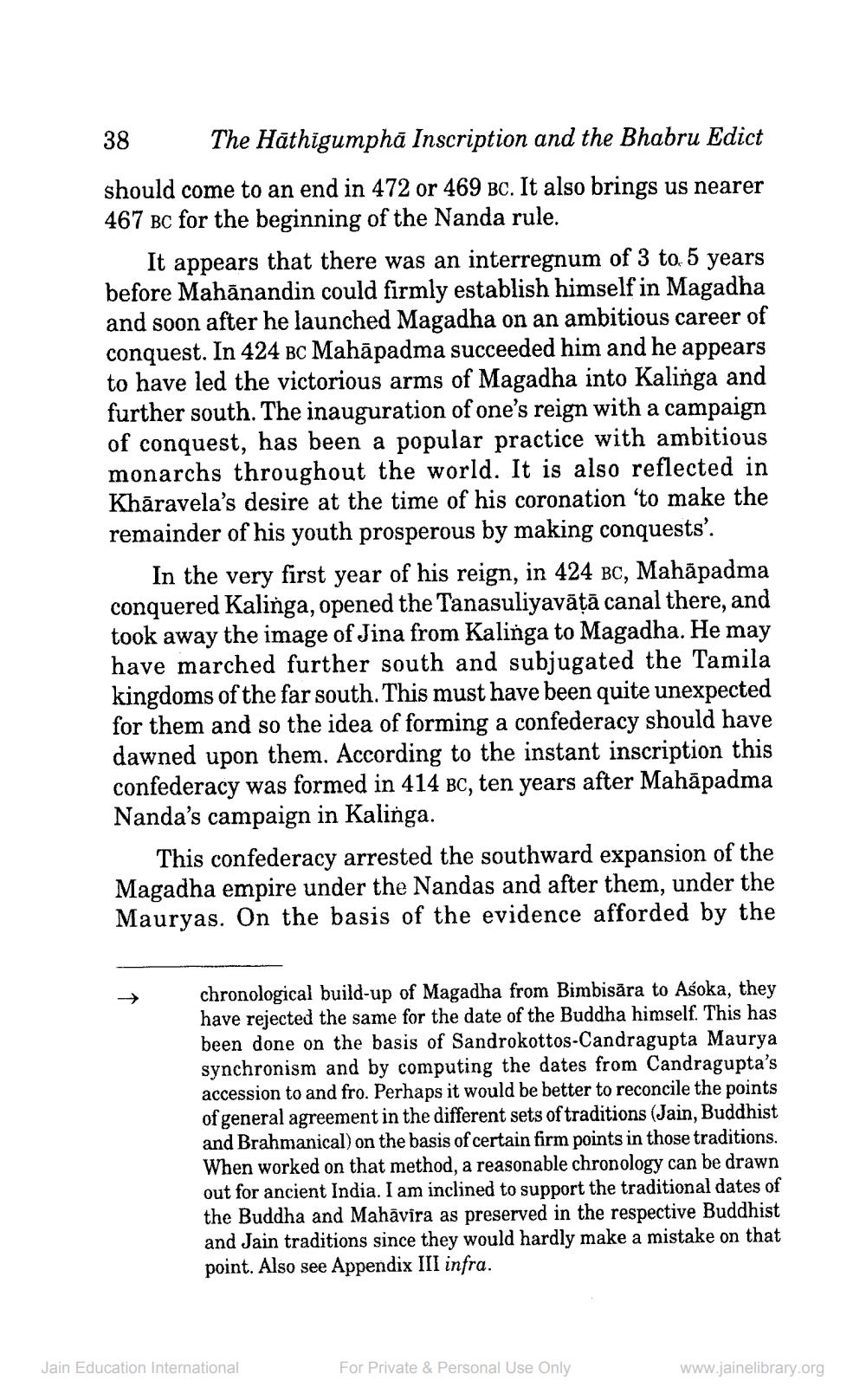________________
38 The Hathigumphā Inscription and the Bhabru Edict should come to an end in 472 or 469 BC. It also brings us nearer 467 Bc for the beginning of the Nanda rule.
It appears that there was an interregnum of 3 to 5 years before Mahānandin could firmly establish himself in Magadha and soon after he launched Magadha on an ambitious career of conquest. In 424 BC Mahāpadma succeeded him and he appears to have led the victorious arms of Magadha into Kalinga and further south. The inauguration of one's reign with a campaign of conquest, has been a popular practice with ambitious monarchs throughout the world. It is also reflected in Khāravela's desire at the time of his coronation to make the remainder of his youth prosperous by making conquests’.
In the very first year of his reign, in 424 BC, Mahāpadma conquered Kalinga, opened the Tanasuliyavātā canal there, and took away the image of Jina from Kalinga to Magadha. He may have marched further south and subjugated the Tamila kingdoms of the far south. This must have been quite unexpected for them and so the idea of forming a confederacy should have dawned upon them. According to the instant inscription this confederacy was formed in 414 BC, ten years after Mahāpadma Nanda's campaign in Kalinga.
This confederacy arrested the southward expansion of the Magadha empire under the Nandas and after them, under the Mauryas. On the basis of the evidence afforded by the
chronological build-up of Magadha from Bimbisăra to Asoka, they have rejected the same for the date of the Buddha himself. This has been done on the basis of Sandrokottos-Candragupta Maurya synchronism and by computing the dates from Candragupta's accession to and fro. Perhaps it would be better to reconcile the points of general agreement in the different sets of traditions (Jain, Buddhist and Brahmanical) on the basis of certain firm points in those traditions. When worked on that method, a reasonable chronology can be drawn out for ancient India. I am inclined to support the traditional dates of the Buddha and Mahāvira as preserved in the respective Buddhist and Jain traditions since they would hardly make a mistake on that point. Also see Appendix III infra.
Jain Education International
For Private & Personal Use Only
www.jainelibrary.org




